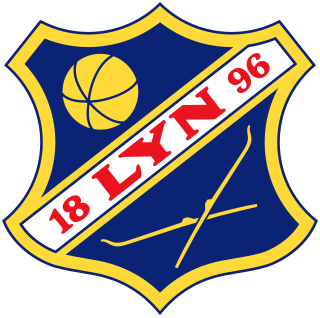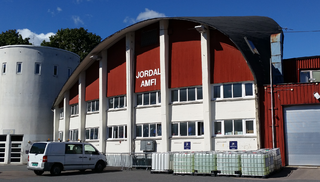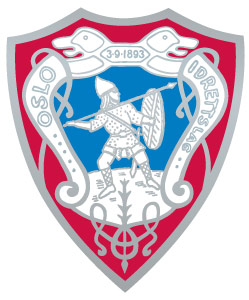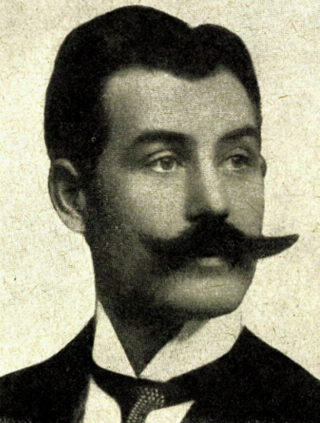
The 1952 Winter Olympics, officially known as the VI Olympic Winter Games and commonly known as Oslo 1952, was a winter multi-sport event held from 14 to 25 February 1952 in Oslo, the capital of Norway.

Vålerenga Fotball is a Norwegian association football club from Oslo and a part of the multi-sport club Vålerengens IF. Founded in 1913, the club is named after the neighbourhood of Vålerenga. Vålerenga's home ground is Intility Arena, located in Valle-Hovin. Vålerenga are five-time league champions and four-time Norwegian Football Cup champions, having last won the league in 2005 and the cup in 2008.

Lyn 1896 Fotballklubb is a Norwegian football club and a department of the sports club Ski- og Fotballklubben Lyn based in Oslo, whose members also participate in Nordic skiing and orienteering. Until 2010, SFK Lyn had two football departments, one professional section and one amateur section. After the professional football department, FK Lyn, was bankrupted in 2010, the fans decided to support the amateur department, Lyn Fotball, instead. With the help of some of the old FK Lyn players, Lyn Fotball has won three consecutive promotions, and are playing in the 2. divisjon. The team plays its home matches at Bislett Stadium, and the head coach is currently Jan Halvor Halvorsen.

Ullevaal Stadion is an all-seater football stadium located in Oslo, Norway. It is the home ground of the Norway national football team, and the site of the Norwegian Cup Final. From its opening in 1926 to 2009 it was the home ground of FK Lyn and from 1999 to 2017 was a home ground of Vålerenga IF. With a capacity of approximately 28,000, it is the largest football stadium in Norway. The national stadium is fully owned by the Football Association of Norway (NFF).

The Bislett Games is an annual track and field meeting at the Bislett Stadium in Oslo, Norway. Previously one of the IAAF Golden League events, it is now part of the Diamond League.
The Lerkendal Stadion is an all-seater association football stadium located at Lerkendal in Trondheim, Norway. The home ground of the Eliteserien (2017) side Rosenborg BK, it has a capacity for 21,405 spectators, making it the second-largest football stadium in the country.

Vikingskipet, officially known as Hamar Olympic Hall, is an indoor multi-use sport and event venue in Hamar, Norway. It was built as the speed skating rink for the 1994 Winter Olympics, and has since also hosted events and tournaments in ice speedway, motorcycle speedway, rally, association football, bandy, ice sledge speed racing, flying disc and track cycling. The arena is also used for concerts, trade fair and the annual computer party The Gathering. It is the home arena of Hamar IL bandy team. The venue is owned by Hamar Municipality, and along with Hamar Olympic Amphitheatre is run by the municipal Hamar Olympiske Anlegg. Vikingskipet has a capacity for 10,600 spectators during sporting events and 20,000 during concerts.

Voldsløkka Stadion is a sports stadium in Oslo, Norway.

Telenor Arena, sometimes referred to as Fornebu Arena, is a multi-purpose indoor arena located at Fornebu in Bærum, outside Oslo, Norway. It serves as a venue for a variety of events, including concerts, exhibitions, action shows, family shows, TV and sport. It has a capacity for 15,000 spectators for sports and 25,000 for concerts, including 40 luxury boxes and club seating for 1,200. The venue has a fixed roof and an asphalt floor. The venue was opened ahead of the 2009 Norwegian football season as a replacement for Nadderud Stadion. It cost 585 million Norwegian kroner (NOK) to build, of which NOK 300 million was for the sports venue. The arena will host the 2025 World Men's Handball Championship with the country, Croatia and Denmark including the final.

Jordal Amfi was an indoor ice hockey rink in Oslo, Norway, the first bearing that name. The venue opened in 1951 to host the 1952 Winter Olympics. Jordal was also the site of the 1958 and the 1999 IIHF World Championship. It would in the following decades also serve several boxing matches and concerts.

Kadettangen is a small peninsula outside of Sandvika in Bærum, Norway. Originally named Sandvikstangen, it got its current name from the cadet training conducted by the Norwegian Military Academy for the better part of the nineteenth century. The peninsula is now used mainly for boating, beach life and sports, being the home ground of association football club Bærum SK.

Dælenenga idrettspark is a sports facility located at Grünerløkka in Oslo, Norway. It consists of an artificial turf football pitch, a club house and an indoor ice rink—Grünerhallen. The facilities are owned by the Municipality of Oslo and used and operated by Grüner IL, the local sports club.

The 1952 Winter Olympics were held in and around Oslo, Norway, from 14 to 25 February 1952. Ten competition and eight non-competition venues were used, in addition to three designated, but unused, reserve competition venues. Six of the competition venues were located in Oslo, while one each was located in Bærum, Skedsmo, Drammen and Krødsherad. Bislett stadion was the centerpiece of the games, hosting the opening and closing ceremonies, the speed skating and the figure skating. Bislett featured both a 400-meter (1,300 ft) circumference speed skating track and a 60-meter (200 ft) long rink used for figure skating, separated by snow banks. Two reserve venues were designated for the skating events, Tryvann stadion in Oslo and Hamar stadion in Hamar.
The 1962 Norwegian Football Cup was the 57th season of the Norwegian annual knockout football tournament. The tournament was open for all members of NFF, except those from Northern Norway. Fredrikstad were the defending champions, but they were eliminated by the second-tier team Vard in the quarterfinal.

Oslo Idrettslag is a Norwegian multi-sports club from Oslo, with sections for swimming, speed skating, figure skating and athletics.

The Battle of Oslo or the Oslo Derby is the name given to football matches between Lyn Fotball and Vålerenga Fotball, both of them from Oslo, the capital of Norway.

Jordal Idrettspark is a multi-sports complex located at Jordal in Oslo, Norway. Owned by Oslo Municipality, its main tenant is Vålerengens IF. The main components are two ice hockey rinks, Jordal Amfi and Ungdomshallen, and a football stadium, Jordal Stadion.

Intility Arena, also referred to as Vålerenga Stadion, is an association football stadium in Oslo, Norway. The stadium is the home stadium for the Vålerenga Fotball, currently playing in the Eliteserien, and it has a seating capacity of 16,555 people.

Martinus Lørdahl was a Norwegian businessperson, multi sports competitor and sports administrator.























